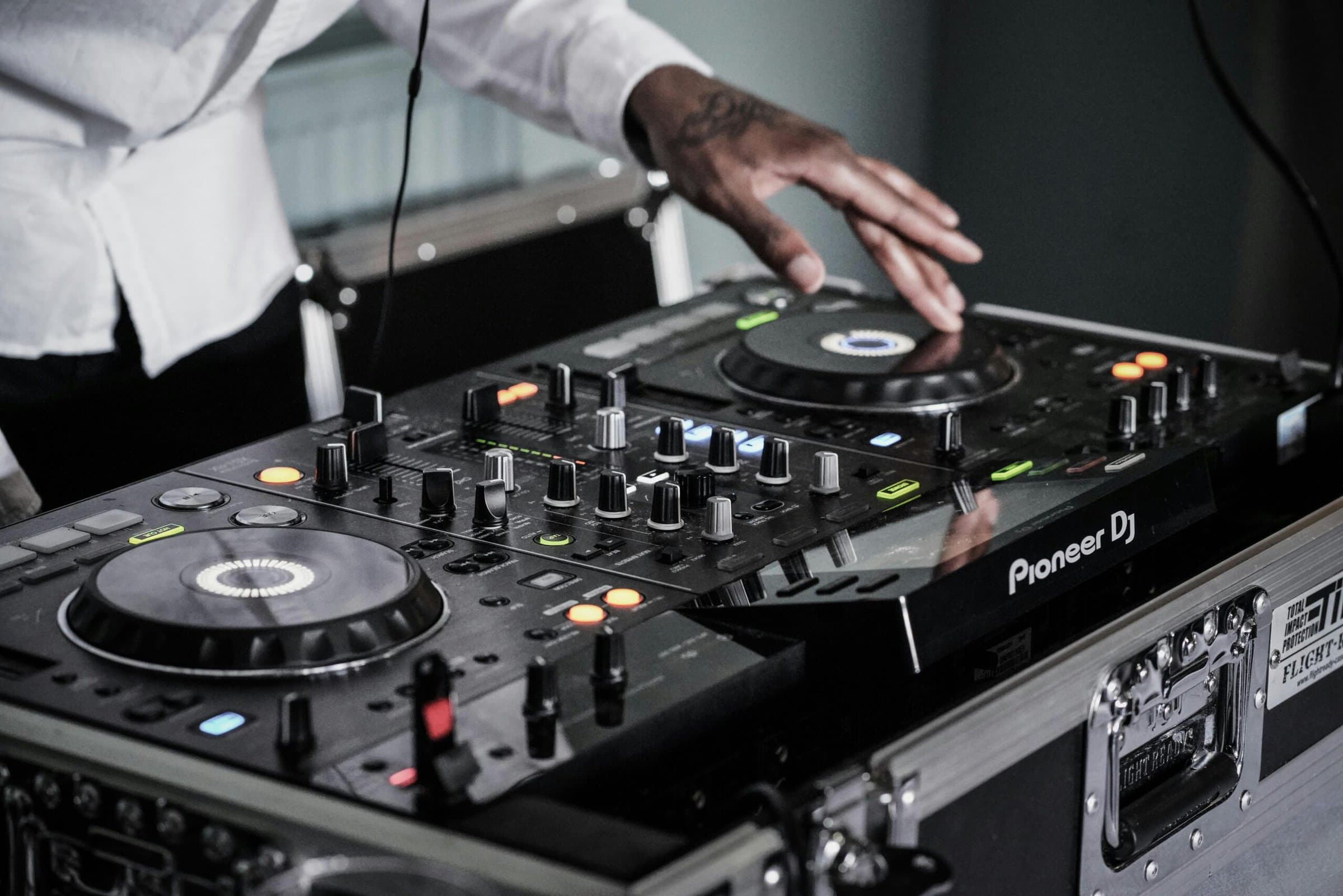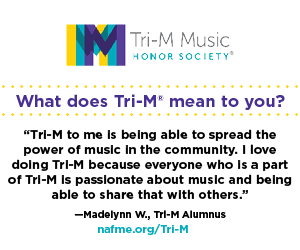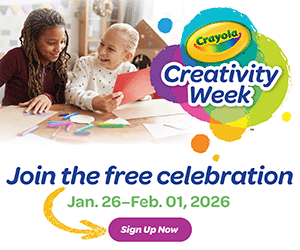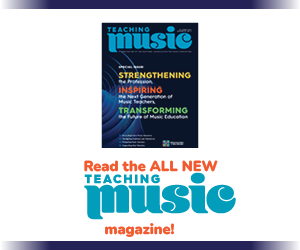/ News Posts / The DJ as Educator
The DJ as Educator
Beyond Beats
By NAfME Members Dr. José Valentino Ruiz and Andrew Wang
In recent years, DJing has evolved from a niche skillset associated primarily with entertainment into a pedagogical powerhouse that can activate multiple forms of intelligence in music learners. For many students—especially those in urban, multicultural, or tech-integrated environments—DJing offers more than music-making. It provides a robust, embodied experience of improvisation, multitasking, audience awareness, and leadership through sound.
Far from being just about spinning tracks or hyping a crowd, DJing has the power to train students in real-time decision-making, social-emotional development, digital musicianship, and entrepreneurial thinking. For music educators, integrating DJing into a curriculum is not about replacing traditional instruction—but about expanding the creative, cultural, and professional horizons of our students.
DJing as Improvisational Education
Every DJ performance is an improvisation in context. Unlike pre-composed music, DJing demands that students respond in real time—to the energy of the audience, the vibe of the room, and the momentum of the music. Transitions, loops, drops, and blends are executed spontaneously. This develops improvisational acuity similar to that of jazz or world music traditions, yet rooted in a contemporary and accessible framework.
It’s not just about what songs to play—it’s about when and how to play them. Students learn to feel time, rhythm, and tension-resolution structures instinctively, which in turn improves their listening and phrasing as performers and composers.
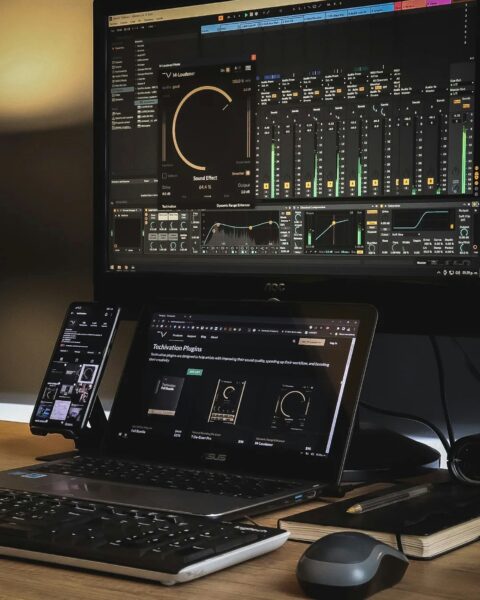
Photo by Techivation on Unsplash
The Multitasking Brain: Cognitive Agility in Action
DJing strengthens cognitive multitasking like few other musical practices. A skilled DJ must simultaneously:
- Cue the next track
- Monitor BPM (beats per minute)
- Adjust EQ levels
- Engage the crowd
- Track structure and narrative flow
- Respond to unplanned technical challenges
This interplay sharpens executive function, divided attention, and working memory—skills that are transferable to academic learning, performance under pressure, and even everyday organization.
Audience Awareness and Relational Intelligence
One of the most overlooked but powerful benefits of teaching DJing is how it cultivates audience awareness. DJs must become emotionally intelligent observers, reading the room for subtle cues: Are people engaged or disengaged? Is the energy building or waning? What does the moment need?
This enhances relational intelligence—an essential leadership trait in any professional or artistic field. Students learn how to connect, adapt, and lead not just with words, but with sound and presence. This kind of social attunement nurtures empathy, responsiveness, and confidence.
The Power of Sonic Influence and Nonverbal Communication
A DJ doesn’t need a microphone to change the atmosphere of a room. Through musical selection, mixing techniques, and sound dynamics, students discover that they can influence emotion, create narrative arcs, and shift energy without saying a word.
This realization empowers students to take ownership of nonverbal communication as an expressive and leadership tool. For students who may be introverted, neurodivergent, or otherwise hesitant to lead with speech, DJing offers a voice through music.
DJing as Leadership Training
A DJ is, in effect, a conductor of the collective experience. They lead the audience through a curated journey—balancing structure and spontaneity, flow and disruption.
In this leadership role, students practice:
- Decision-making
- Emotional regulation
- Confidence under scrutiny
- Ethical responsibility for their impact
They also learn when not to act—a vital leadership trait that fosters restraint, attentiveness, and timing.
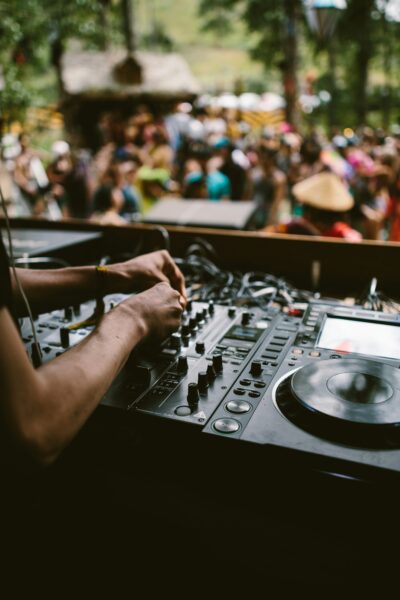
Photo by Michael Benz on Unsplash
10 Additional Benefits of Teaching DJing in Music Education
- Technological Literacy
Students engage deeply with software like Serato, Rekordbox, Traktor, or Ableton, gaining skills in digital music production, MIDI mapping, and signal flow. - Entrepreneurial Thinking
DJing is inherently a freelance, gig-based career. Students learn branding, client negotiation, pricing, equipment maintenance, and self-promotion. - Cultural Studies and Music Versatility
Students are exposed to a wide array of genres, learning to appreciate and analyze music across ethnic, social, and historical lines. They become curators of musical culture. - Event Planning and Logistics
From setting up gear to managing time slots and audience flow, students learn project management and production logistics. - Self-Awareness and Identity Formation
DJing gives students the chance to explore their identity through musical taste, mixing style, and artistic expression—important for self-actualization in adolescence and early adulthood. - Community Engagement
DJ programs can facilitate service learning—students spin for school events, community centers, or fundraisers, using their skills to give back and build social capital. - Participatory Learning Modalities
DJing supports visual, aural, and kinesthetic learners. It’s accessible to students who may not read notation fluently but have a strong musical ear and sense of timing. - Confidence and Risk-Taking
Mixing in front of a live crowd is vulnerable. With each set, students build resilience, creativity, and boldness—essential traits for any performer. - Time Management and Focus
Creating a cohesive setlist or preparing for a live performance requires structured preparation and planning, fostering discipline, and time-budgeting habits. - Portfolio Development for College and Career Readiness
Students can record sets, produce beat tapes, and build creative resumes to showcase their unique skillset for college admissions or music industry roles.
How to Integrate DJing into Your Program
Start Small
Begin by introducing students to user-friendly DJ software available on classroom iPads or laptops. Applications like djay or Virtual DJ offer intuitive interfaces for learning basic skills such as beat-matching, cueing, and track selection. A single lesson in digital mixing can immediately engage students in rhythmic awareness and creative experimentation.
Invite Guest DJs
Bring in local DJs for live demonstrations and Q&A sessions. These visits provide real-world context, demystify the profession, and expose students to diverse DJing styles and career paths. Guest artists can also offer valuable mentorship and encourage students to see themselves in the craft.
Connect to Theory
Use DJing as a practical tool for teaching music theory. Concepts like phrase structure, rhythm, tempo, dynamics, and harmonic compatibility become instantly relevant when students have to align two tracks in real time. It’s theory in action—with immediate, audible results.
Use Low-Cost Controllers
Start with accessible hardware such as the Numark Party Mix or Pioneer DDJ-200. These affordable controllers offer hands-on experience with mixing, EQ adjustment, and performance tools. They’re durable, portable, and ideal for classroom use, making them perfect for pilot programs or budget-conscious schools.
Encourage Collaboration
Create opportunities for DJ students to work with vocalists, instrumentalists, or beat producers. Collaborative remix or performance projects allow students to explore arranging, live sound blending, and stage presence. These activities also strengthen teamwork, creative problem-solving, and musical communication.

Photo by Eduardo Soares on Unsplash
A Pathway to Creative and Professional Development
As educators, our role is to prepare students not only to interpret the music of the past but also to shape the music of the future. DJing offers an on-ramp to musical agency, entrepreneurship, cultural dialogue, and emotional leadership. It cultivates the kind of 21st-century learner who can think fast, feel deeply, and lead responsibly through sound.
Incorporating DJing into music education isn’t just about adding new equipment to the classroom—it’s about honoring the evolving ways students experience music, express themselves, and imagine their futures. Turntables can become teaching tools. And in the right hands, those tools can shape lives.
Top photo by Yomex Owo on Unsplash
About the authors:
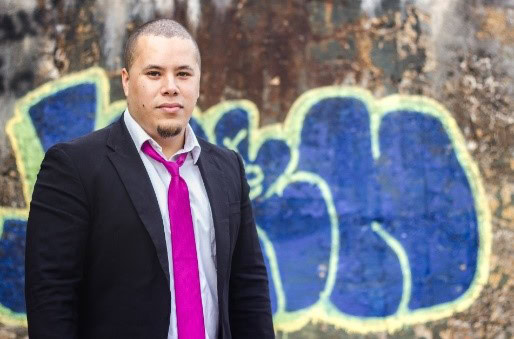 NAfME member José Valentino Ruiz, Ph.D., is a multi-Latin GRAMMY® winning multi-instrumentalist, producer, composer, and performing artist renowned for gracing some of the world’s most prestigious stages. He serves as the Expert Columnist for Music Business and Creative Enterprise Leadership at F-Flat Books and is the founder of JV Music Enterprises. Formally, he was a music teacher at Pepin Academies for a charter school for neurodivergent learners. Notably, his hip-hop production for the documentary Art Vessel—highlighting hip hop art’s cultural impact—earned an EMMY® Award for Best Cultural Documentary in 2018. For more information, visit www.josevalentino.com.
NAfME member José Valentino Ruiz, Ph.D., is a multi-Latin GRAMMY® winning multi-instrumentalist, producer, composer, and performing artist renowned for gracing some of the world’s most prestigious stages. He serves as the Expert Columnist for Music Business and Creative Enterprise Leadership at F-Flat Books and is the founder of JV Music Enterprises. Formally, he was a music teacher at Pepin Academies for a charter school for neurodivergent learners. Notably, his hip-hop production for the documentary Art Vessel—highlighting hip hop art’s cultural impact—earned an EMMY® Award for Best Cultural Documentary in 2018. For more information, visit www.josevalentino.com.
 NAfME member Andrew Wang received his undergraduate degree at the University of Miami in Coral Gables, Florida. He also has his master’s in music education from Kent State University. Andrew works as the Music Education expert for Hip Hop In The 914. Andrew has presented around the country from University of Miami to Howard University in Washington, DC, and internationally through virtual presentations in Dublin and Germany. Andrew believes good teaching happens when the student feels successful.
NAfME member Andrew Wang received his undergraduate degree at the University of Miami in Coral Gables, Florida. He also has his master’s in music education from Kent State University. Andrew works as the Music Education expert for Hip Hop In The 914. Andrew has presented around the country from University of Miami to Howard University in Washington, DC, and internationally through virtual presentations in Dublin and Germany. Andrew believes good teaching happens when the student feels successful.
Interested in reprinting this article? Please review the reprint guidelines.
The National Association for Music Education (NAfME) provides a number of forums for the sharing of information and opinion, including blogs and postings on our website, articles and columns in our magazines and journals, and postings to our Amplify member portal. Unless specifically noted, the views expressed in these media do not necessarily represent the policy or views of the Association, its officers, or its employees.
Published Date
July 29, 2025
Category
- Culturally Relevant Teaching
- Innovation
- Special Education
- Technology
Copyright
July 29, 2025. © National Association for Music Education (NAfME.org)
